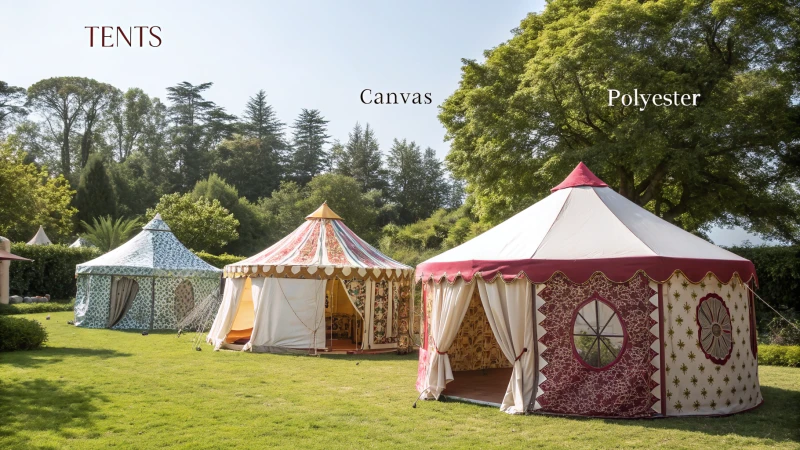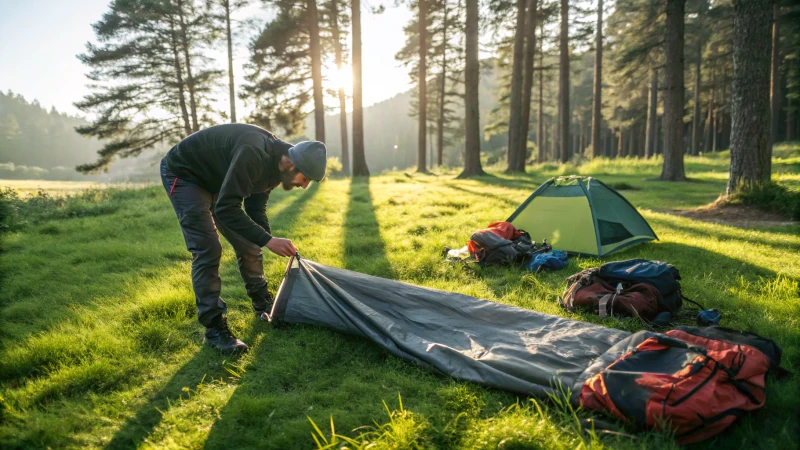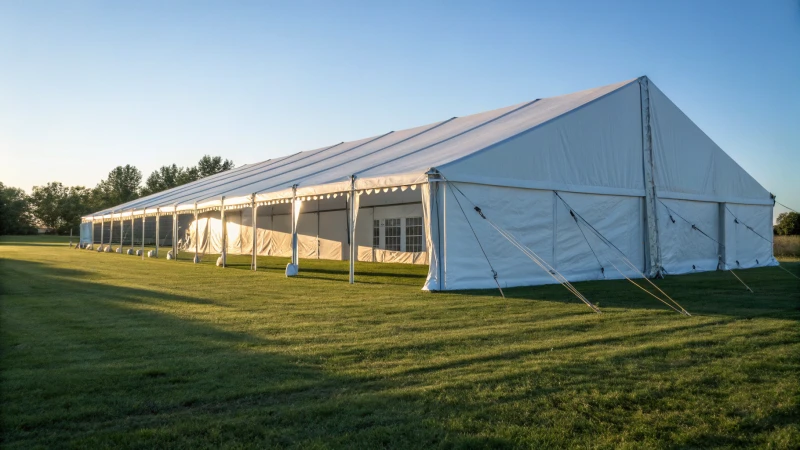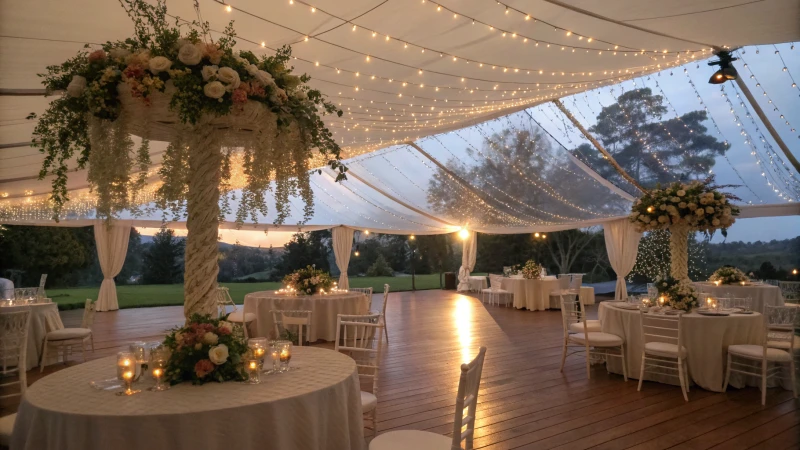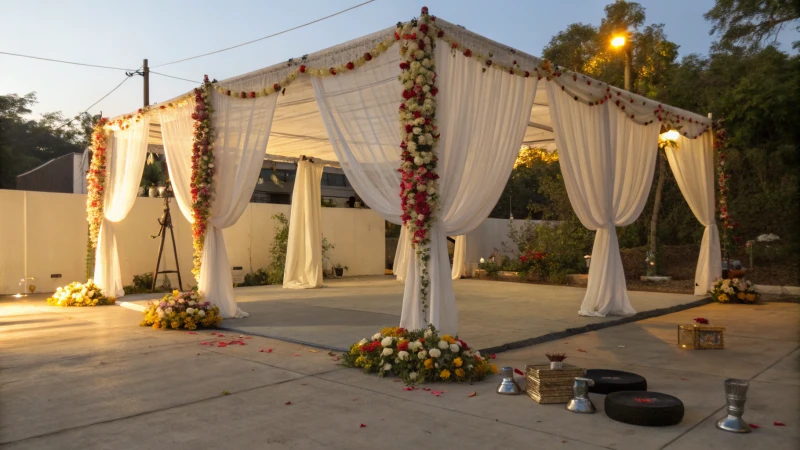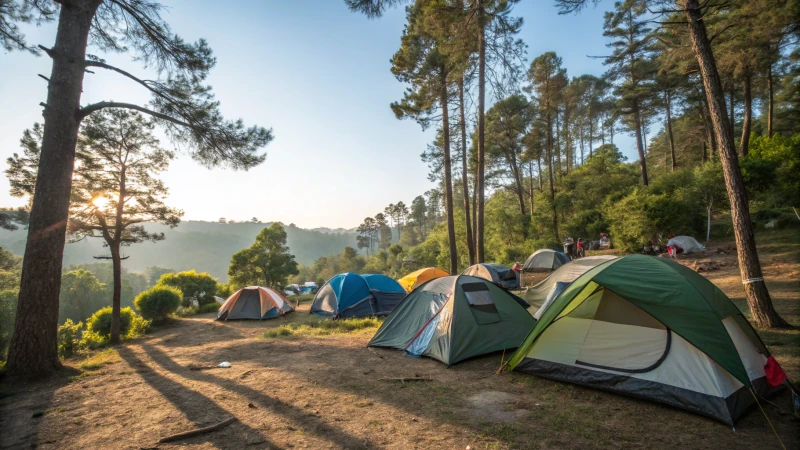
Choosing the right outdoor tent can feel like a labyrinth of options, but understanding the cost factors can light the way.
The cost of an outdoor tent hinges on its size, material quality, customization features, and intended use. Bigger tents crafted from top-notch materials with added features like weatherproofing or custom designs naturally command a higher price. Balancing these elements helps in aligning with both needs and budget.
You know, when I first ventured into buying outdoor tents, I was overwhelmed by all the choices and price points. It wasn’t until I started breaking down each factor that the fog began to clear. Each element, from size to materials, tells a part of the story behind the price tag.
Take size, for example. You’d think bigger is always better, but it’s not just about space—it’s about more materials and labor. I remember planning a grand event and realizing that larger tents could sometimes stretch the budget in unexpected ways. Then there’s material quality; opting for durable frames and robust fabrics often pays off in longevity but can be a tough initial pill to swallow.
And let’s not forget customization—my favorite part! Those little extras like unique shapes or personalized colors add flair but also cost. Understanding these layers has helped me make more informed and savvy purchasing decisions. So if you’re in the market, dissect each factor and weigh it against your needs. Trust me, it’s worth the effort!
Larger tents generally cost more than smaller ones.True
Larger tents require more materials and labor, increasing the price.
Customization options do not affect tent prices.False
Customization increases production complexity, raising costs.
How Does Tent Size Affect Pricing?
Have you ever wondered why some tents are pricier than others? It all boils down to size and how it influences every aspect of the cost.
Tent size directly impacts pricing because larger tents require more materials and labor, making them more expensive. Smaller tents are generally cheaper, while larger tents with custom designs and features drive up costs.
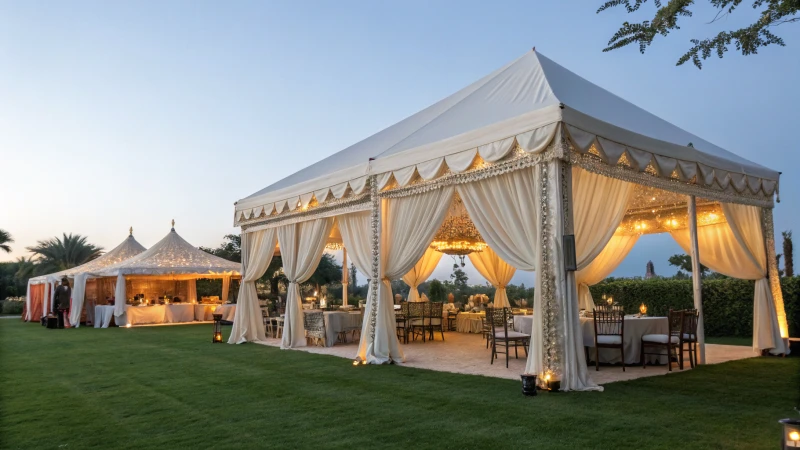
Materials and Labor Costs
Remember the last time you helped set up a massive tent for a family reunion or a big event? The sheer volume of material and the number of hands needed can be overwhelming. Larger tents, like those grand party tents, need extra fabric and robust frames, which naturally hikes up the cost. Plus, you can’t forget the team of people required to erect such a structure — it all adds to the final price tag. When premium fabrics like PVC-coated polyester1 come into play, it’s no surprise they can cost a pretty penny compared to more standard materials.
Customization Options
Imagine planning an unforgettable wedding and wanting the tent to reflect that dream ambiance perfectly. That’s where customization comes in, but it can be a bit of a wallet drainer. Larger tents with bespoke features — think ventilation systems or chic entrances and windows — add complexity and cost. For example, going for an industrial tent2 with top-notch insulation and heating can make the price skyrocket compared to simpler models.
Event and Space Requirements
Every event is unique, just like the tents they require. A cozy wedding might call for an elegant marquee, while a bustling corporate gig could demand modular sections for all sorts of activities. Knowing what your event needs helps in picking the right tent size without breaking the bank. It’s all about understanding your space requirements to keep everything running smoothly.
Rental vs. Purchase
Deciding whether to rent or buy a tent can feel like choosing between two equally appealing ice cream flavors. For short-term events, renting is usually the way to go since it often includes setup and teardown services. But if you find yourself needing a large tent for ongoing use, purchasing might be the better investment despite those steeper initial costs.
Size Table and Pricing Example
| Tent Size | Typical Use | Estimated Cost Range |
|---|---|---|
| Small | Backyard events | $200 – $500 |
| Medium | Weddings | $1,000 – $3,000 |
| Large | Corporate events | $5,000 – $10,000 |
| Extra-Large | Industrial use | $15,000+ |
Factors Influencing Large Tent Pricing
When planning a big event, I always consider those sneaky little costs that come with large tents. These often offer modular designs that allow for flexibility but can add to expenses if extra sections are necessary. Exploring modular options3 ensures you get enough space without splurging on more than you need.
Larger tents require more materials and labor.True
Bigger tents need more fabric and frames, increasing costs.
Custom designs do not affect tent pricing.False
Custom features like doors and windows increase complexity and cost.
Why Do Material Choices Matter in Tent Costs?
Have you ever wondered why one tent costs more than another? It all boils down to the materials used. Let me guide you through the essentials of tent materials and how they impact price.
Material choices in tents affect costs primarily due to differences in durability, weather resistance, and maintenance needs. High-quality materials typically ensure better performance but often come with a heftier price tag.

Frame Materials: Durability vs. Cost
I remember the first time I had to choose a tent for a major event. Standing in the store, surrounded by options, I learned that the frame material makes a world of difference. For instance, high-quality aluminum frames4 are fantastic if you’re looking for something lightweight and corrosion-resistant—perfect for long-term use. But, they’re pricier than steel. Steel might be heavier, but it’s budget-friendly. I’ve found that galvanized coatings on steel frames can add a layer of rust protection, though it does bump up the cost a bit.
Fabric Materials: Weather Resistance and Longevity
When it comes to fabric, the choice can make or break your tent’s performance. I once opted for a premium PVC-coated polyester for an outdoor festival tent—it was a game-changer in weatherproofing and UV resistance. But, let me tell you, the cost was definitely on the higher end. If you’re after something that offers fire retardancy or insulation, specialized fabrics add value but will also stretch your budget.
Here’s a quick comparison:
| Fabric Type | Features | Cost |
|---|---|---|
| PVC-coated | Weatherproof, durable | High |
| Polyester | Lightweight, UV-resistant | Moderate |
| Vinyl | Insulated, fire-retardant | High |
Additional Features and Customization
Customization can transform a basic tent into a personalized haven but expect an increase in costs. I love incorporating features like transparent or double-layered fabrics—they make spaces feel open and airy but do require a larger budget. Unique designs such as dome-shaped or geodesic tents5 are not just stylish; they’re incredibly functional in various environments. However, their complex structures can make them pricier.
Influence of Intended Use on Material Selection
The purpose of your tent is crucial in determining which materials to choose and how much you’ll spend. For example, if you’re setting up a residential tent in your backyard for occasional gatherings, affordability might trump durability. However, for industrial applications where harsh weather is a factor, you’d want to invest in robust materials.
Consider these scenarios:
- Commercial Events: Opt for high-grade materials for safety and longevity.
- Seasonal Storage: Durable fabrics with minimal maintenance work best.
- Backyard Gatherings: Go for cost-effective options with basic weather resistance.
By understanding these nuances, you’ll be better equipped to choose materials that meet your specific needs without breaking the bank.
Aluminum frames are more expensive than steel.True
Aluminum is lightweight and corrosion-resistant, increasing its cost.
PVC-coated polyester is the cheapest tent fabric.False
PVC-coated polyester is high-cost due to weatherproofing and UV resistance.
How Does Customization Impact Tent Pricing?
Ever wonder how a tent transforms from a simple shelter to a personalized masterpiece?
Customization affects tent pricing by increasing costs for unique shapes, sizes, materials, and additional features. Tailoring a tent to specific needs adds value but also elevates the overall expense.
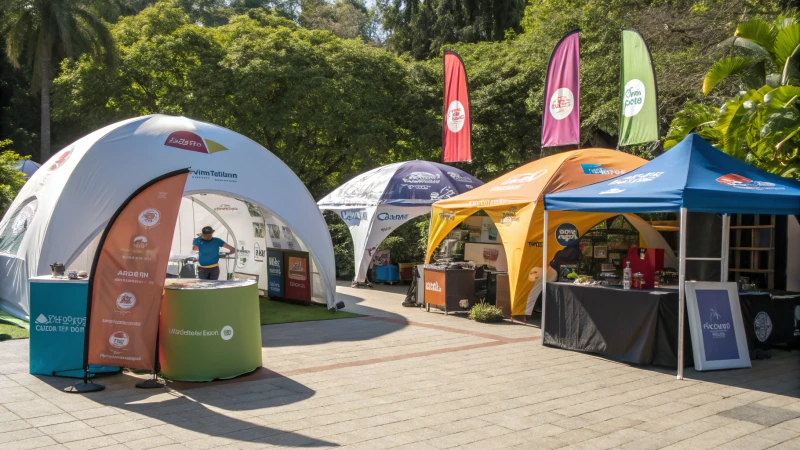
Custom Shapes and Sizes
I remember the time when I decided to go all out with a tent design for an upcoming event. The idea of a dome-shaped tent sounded exhilarating but, wow, did it add up quickly! Opting for custom shapes like dome or geodesic tents meant diving into more complex engineering and higher material costs. It’s like comparing a classic sedan to a custom-built sports car—the appeal is undeniable, but so is the price.
When considering the impact of customization6 on tent pricing, size and shape are crucial factors. Standard designs, such as rectangular or A-frame tents, are typically more affordable. However, opting for unique shapes like dome or geodesic tents increases costs due to more complex engineering and higher material usage.
| Shape Type | Cost Implication |
|---|---|
| Rectangular | Lower |
| Dome | Higher |
| Geodesic | Highest |
Material Selection
Choosing the right materials is like picking the perfect outfit for an important occasion. I once opted for premium fabrics with UV resistance for an outdoor setup, and although it stretched my budget, the durability was worth every penny. The frames, made from high-quality aluminum, added both longevity and peace of mind.
Choosing premium materials for your tent’s frame and fabric can significantly affect the price. High-quality aluminum or steel frames provide durability but come at a premium. Similarly, fabrics with properties like UV resistance or fire retardancy add to the cost.
Explore more about premium materials7 to see how they can enhance durability and longevity.
Additional Features and Branding
Adding those extra features is akin to accessorizing your favorite outfit—it makes all the difference! From custom logos to added ventilation, every addition seemed necessary at the time but, oh boy, did it increase the expenses. It’s essential to balance between functionality and aesthetics without letting your budget spiral out of control.
Adding features such as windows, doors, ventilation, or flooring increases expenses. Branding elements like custom logos or specific color schemes further elevate costs. While these additions can enhance functionality and aesthetics, they also require additional resources and time in production.
Example Table of Additional Features:
| Feature | Cost Increase |
|---|---|
| Windows | Moderate |
| Ventilation | Moderate |
| Custom Logos | High |
The Balance of Cost vs. Value
Reflecting on my experiences, I’ve learned that customization adds both cost and value. Whether you’re designing for an event or a business, understanding how these custom features align with your brand’s image can justify the investment. It’s not just about spending more; it’s about creating something uniquely yours that resonates with your audience.
Customization adds both cost and value. It’s essential to weigh the benefits of tailored solutions against their financial implications. For business owners, understanding how these custom features align with your brand’s image can justify the investment.
For detailed insights, consider examining how custom solutions8 can align with your strategic goals.
This nuanced approach allows businesses to tailor tents precisely to their needs while understanding the associated financial outlays.
Dome tents are more expensive than rectangular tents.True
Dome tents require complex engineering, increasing costs over rectangular designs.
Adding custom logos to tents decreases their cost.False
Custom logos require additional resources, increasing the tent's overall cost.
How Does the Purpose of a Tent Impact Its Price?
Have you ever wondered why some tents cost more than others, even if they look similar?
Intended use affects tent pricing by determining necessary features like material quality, size, and customization. Tents for commercial or industrial use often cost more due to enhanced durability and specialized features.
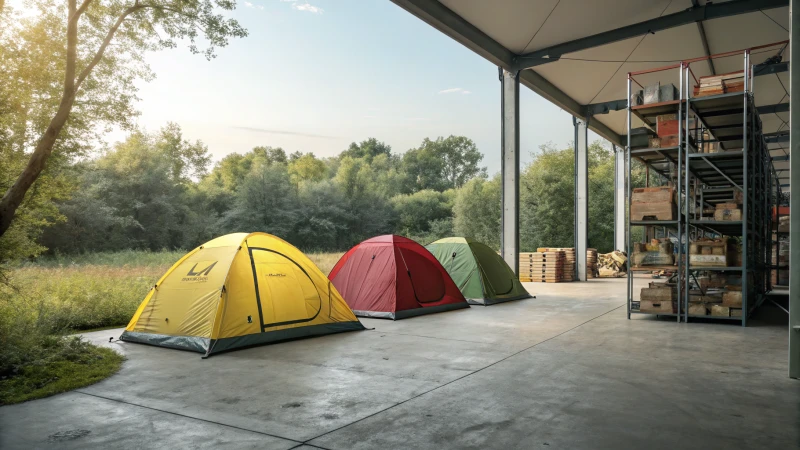
Residential vs. Commercial Tents
I remember my first camping trip when I was so excited to buy a tent. I went for a simple, affordable one because, honestly, as a novice camper, I didn’t need anything fancy. Residential tents like these are generally lighter and focus on portability and ease of setup. But when I transitioned into the tent business, things got a bit more complex. Commercial tents need to be built like tanks—sturdy and weather-resistant—which naturally bumps up the price.
| Type | Cost Consideration |
|---|---|
| Camping Tent | Lightweight, easy setup, less expensive |
| Event Tent | Durable, weather-resistant, higher quality |
Seasonal vs. Permanent Use
When my company started dealing with industrial storage tents, I quickly realized that these semi-permanent structures demand materials that can brave the elements for long periods. Features like UV resistance9 and advanced weatherproofing drive costs up but are essential for longevity and performance.
Customization and Design Features
Customization can take a tent from basic to extraordinary. Take the dome-shaped tents we once crafted for an event with custom branding—it was a showstopper! Such unique designs and features like windows or ventilation systems significantly influence the price.
| Feature | Impact on Price |
|---|---|
| Custom Branding | Increases due to design and manufacturing |
| Specialized Venting | Higher due to engineering requirements |
Industry-Specific Needs
Some industries have stringent requirements. I recall working with a mining company that needed tents with specific fire-retardancy10 standards. These specialized features ensure safety and compliance but add to the cost.
Additionally, advanced features like insulation or integrated HVAC systems are sometimes necessary to handle extreme climates, especially for industries in challenging environments.
Longevity and Maintenance
Investing in high-quality materials might seem costly upfront, but it can save money over time by reducing maintenance needs. Tents designed for extensive use often come with warranties that cover wear and tear beyond standard expectations, which is a huge relief.
Understanding these factors can help you make informed decisions when selecting a tent based on intended use without compromising on quality or exceeding budget constraints.
These considerations illustrate how intended use influences tent pricing, guiding decisions for both personal purchases and commercial investments.
Commercial tents are more expensive than camping tents.True
Commercial tents require durable materials and features, raising costs.
Customization has no effect on tent pricing.False
Custom designs increase costs due to specialized manufacturing needs.
Conclusion
The price of outdoor tents is influenced by size, material quality, customization options, intended use, and installation requirements, impacting both affordability and durability for various applications.
-
Explore why premium fabrics like PVC-coated polyester elevate tent costs due to their durability and weatherproof properties. ↩
-
Learn about specialized features in industrial tents, such as insulation and heating systems, which increase their cost. ↩
-
Find out how modular sections in large tents offer space flexibility but also affect pricing. ↩
-
Discover insights into why aluminum frames might be preferable for certain tent applications. ↩
-
Explore how geodesic tents offer unique structural advantages and aesthetic appeal. ↩
-
Discover how different tent shapes impact pricing due to design complexity and material usage. ↩
-
Learn why premium materials enhance durability and longevity in tents. ↩
-
Understand how custom tent solutions align with strategic business goals. ↩
-
Understand why UV resistance is crucial for long-term tent durability. ↩
-
Learn about fire-retardancy standards and their impact on tent safety. ↩


